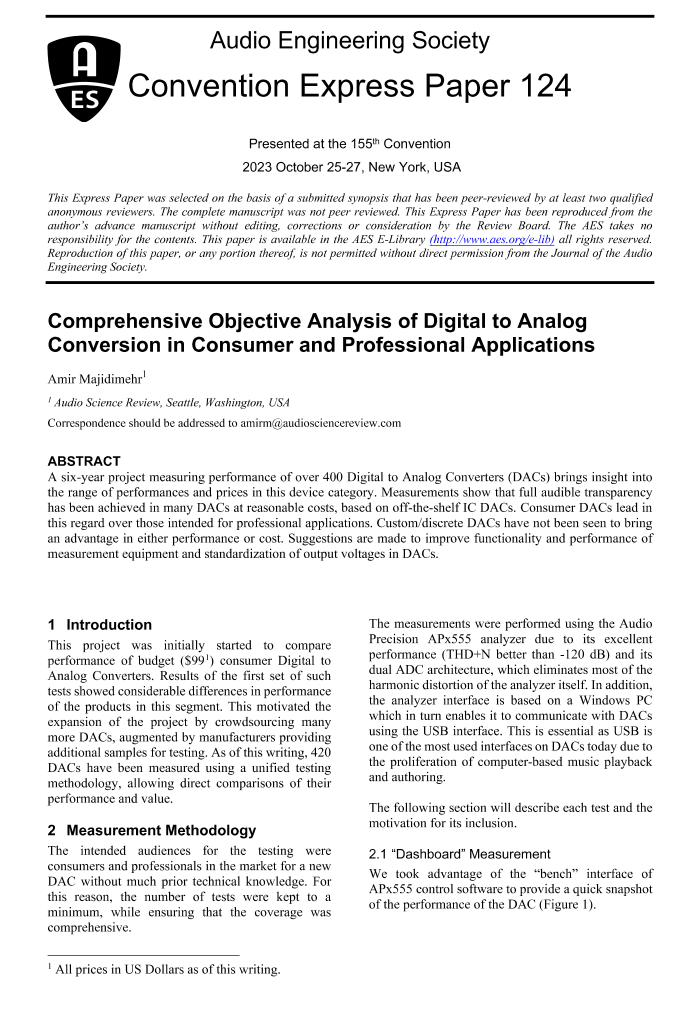BTW because you are a new member are you aware human hearing stops at 22KHZ for the very best of us. While it is intellectually satisfying to read 24/192 it is a marketing strategy that has started a race that no one can hear. 16/44 is more than adequate and you will note it is double human hearing capabilities.
Hmmm, I can distinguish easily on AB tests 16/44.1 against 24/48. My girlfriend and I both passed the test one to each other.
No one could differentiate 48 against 96 kHz, in another test.
Obviously this has nothing to do with Nyquist limit to high frequencies (22.05 and 24 kHz respectively) as we have more than 40 years old and surely can’t hear over 15-17.000 Hz
Anti-imaging filters have probably more to do with we both perceive in instrumental differentiation and texture realism (we play acoustic instruments, classical music) as passband is really narrow on CD quality files. Also dynamic range improve on films and symphonies with high contrast on intensity indications.
What I think may explain also some difference is the Fourier transform to filter and reverse transformation to signal reconstruction: no matter the case you always loose information in finite case. Completely sure that digital Fourier transforms will give a more precise reconstruction on higher resolutions, as is the case in 2D Fourier analysis on images.
What I’m not sure is how much is the total amount of information loosed in CD compared with 24/48 and if is audible or not. But pretty sure that they will exist changes in audible range of frequencies as one cannot make a finite Fourier transform and its reverse and obtain the original function, even in low frequencies.
At least for us is worth to have some bandwidth at least to 24/48 to provide enough extra data to EQ and filter with less impact on the original recording.


